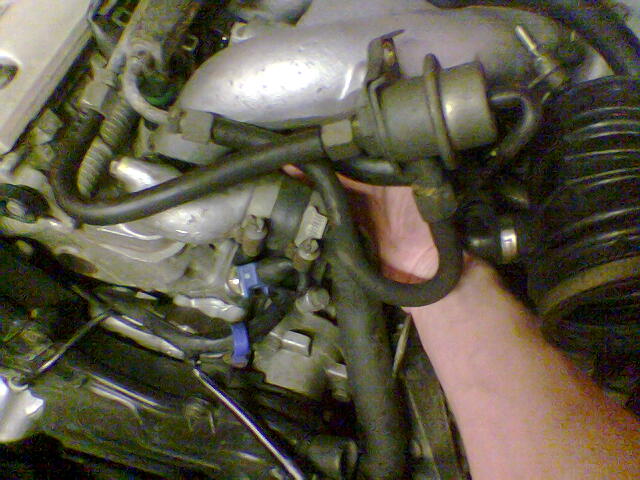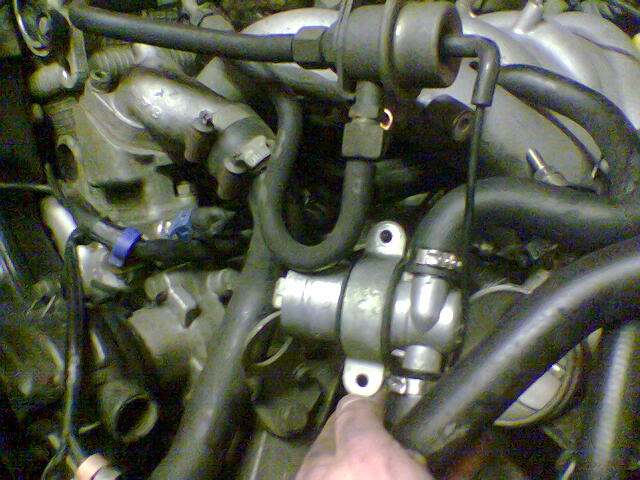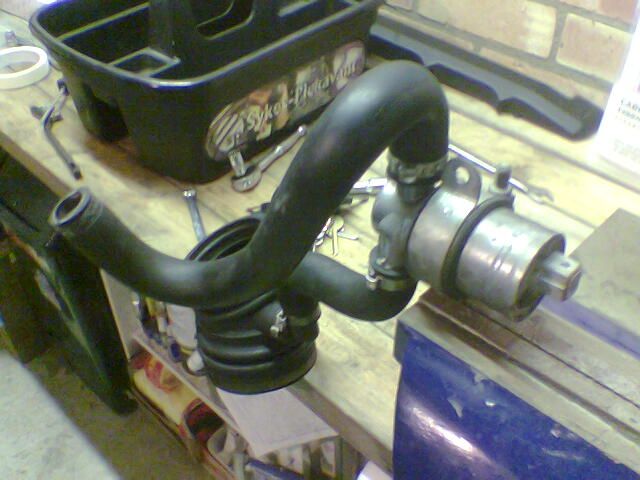Had an identical problem, used the forum search facility and stumbled accross this thread. Thought i'd add my experiences for the archive.....
1991 - S2 (2.5/2.7 similar)
When starting up (started fine) from stone cold to mid-temp (approx 70c) engine would hunt like crazy from 600rpm to 1300rpm oscilations. This would last for 20 seconds, until one final almost stall (450 rpm) and then perfectly flat-line at 800.
This was reproduceable every time, to the same pattern, for the same 20 second duration. It could be overridden by the throttle and be rock steady with a foot controlled 1000rpm.
It was like the ISV was trying to stabilise revs, but responding too slowy - sort of an ooops too much, oooops too little fashion. ISV = Idle Stabilisation Valve or Idle Control Valve. A rotary spindle type valve that provides a bypass air route past the throttle butterfly - hence raising engine speed.
With most other early 1990 Bosch systems, you can clamp the ISV inlet or outlet hoses to eliminate the ISV. When clamped, the engine will either stall, or struggle at a low 600rpm. When you release the clamp, there will be an audible 'woosh' of air internal to the ISV and revs will rise to what ever they should be. ISV test complete. However, Porsche have burried the ISV under the inlet manifold and it is a swine to get to.
As with all things, I eliminated the easiest stuff first.
First of all I checked the throttle body switch for the 'click' when the butterfly closes at rest. All OK. Then I detached all vaccum lines from the inlet manifold and inlet tract. No difference. Then I disconnected the Fuel Tank Evap Canister system from the inlet manifold, plugging all ports. No difference. ISV next.....
I have read the inlet manfold on/off discussions for ISV removal. I started to take the inlet manifold off, but the inlet manifold and throttle body is water heated so I stopped halfway as I didn't want to disturb the cooling circuit. I have heard they are pigs to bleed. Now, it may be that I had success with the 'manifold on' method as I have arms not too disimilar to pipe cleaners. It's a do-by-feel job as well. Still, got the ISV out by removing the air flow meter and inlet tract; plus cutting arms to pieces.
I flushed ISV rotary valve with brake cleaner until it was free to move by my little finger. So much black gunk came out it was un true. Had a quick play with a multi-meter; the windings were not open circuit so that was good enough for me. I had to replace some of the quick release hose clips for more traditional jubilee items as I dont have the quick release tool. Ho hum.
Now, totally messing up the elimination process, I also replaced the coolant temperature sensor (the one for the ECU - not the one for the dash!) at the same time. My tools were out, the new part was there, so I just went for it - which means I can't honestly say ISV or CTS, but as both are 15+ years old, a new CTS would not go a miss.
Anyway, problem since has dissapeared. Eliminated. Gone.
I can only attach one photo per post, so the next couple will be from me. Sorry for the poor quality - only my old camera phone gets greasy!
Good luck to anyone else with this common Bosch problem; replicated on 911's, Vauxhalls, BMW's etc........












